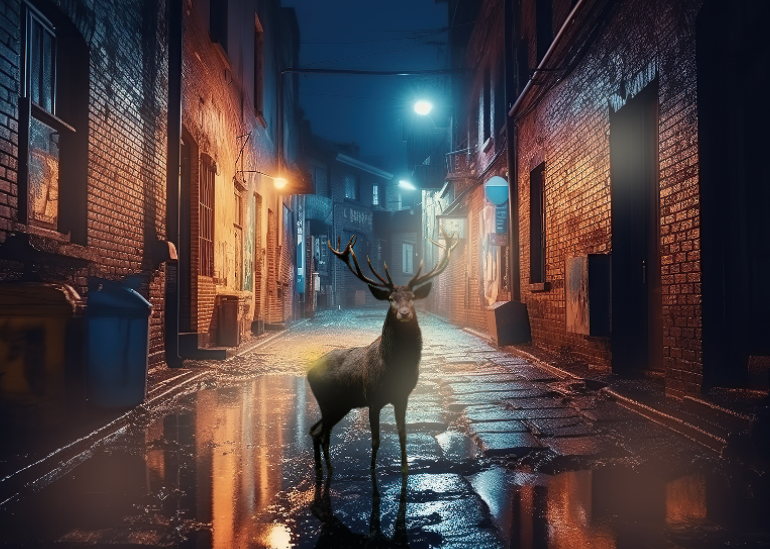Artists who use Photoshop have a new tool in their drop-down menus: artificial intelligence. Adobe yesterday introduced the artificial intelligence capabilities of its six-week-old Firefly software to the photo-editing program, allowing users to use text prompts to modify existing images. The software is now in beta.
A promotional video shows, for example, a cyclist on a country road. By highlighting the center of the roadway and typing “yellow road lines” into a text box, a user can make lane dividers disappear. Want to expand the existing image? Highlight a box on each side and use “generative fill” to make the landscape appear larger.
Have a photo of a deer in the woods, but prefer the creature to appear in a setting that looks more like “a wet alley at night?” Type in the text prompt and click “Generate”, and voila, you’re done. In another case, a dramatic shot of mountains at night becomes more so with the addition of a reflecting lake and the northern lights.

Happy little reindeer, before retouching. Courtesy of Adobe.
Adobe emphasizes that the software was trained on licensed images from Adobe Stock, so it will not infringe intellectual property by populating these text prompts.

The cheerful little reindeer becomes urban, after the AI gets rid of it. Courtesy of Adobe.
Many artists use Photoshop, whether they admit it or not. Lucas Blaylock revealed how he uses the software in an interview with the show Art21. Others, as Barbara Kasten, relying only on the camera and the photographed object, no digital intervention. Photoshopped images even have go against Instagram fact checkers and digital magic skeptics have coined the portmanteau word “fauxtography”.
But Adobe, in a nod to widespread concern over the reliability of images, is also including “content credentials,” which it compares to “nutrition labels” that will remain attached to an image, allowing proper attribution and letting users know what is original and what has been modified or AI-generated This feature was developed in conjunction with the Content Authenticity Initiativea group of media and technology companies, academics and others working on an open industry standard.
Photoshop already has “neural filters” that allow users to do things like smooth a subject’s skin or add a smile. Programs like After Effects and Acrobat also already offer AI functionality.
The software is now 33 years old and, as Farhad Manjoo pointed out in the New York Times on its 25th anniversary, has “achieved the rare status of a product that has become a verb, like Google and Xerox”.
More trending stories:
Sculpture depicting King Tut as a black man sparks international outrage
Where is the art today? Here are some critical impressions gleaned from the Frieze New York Art Fair
Follow Artnet News on Facebook:
Want to stay one step ahead of the art world? Subscribe to our newsletter to receive breaking news, revealing interviews and incisive reviews that move the conversation forward.
